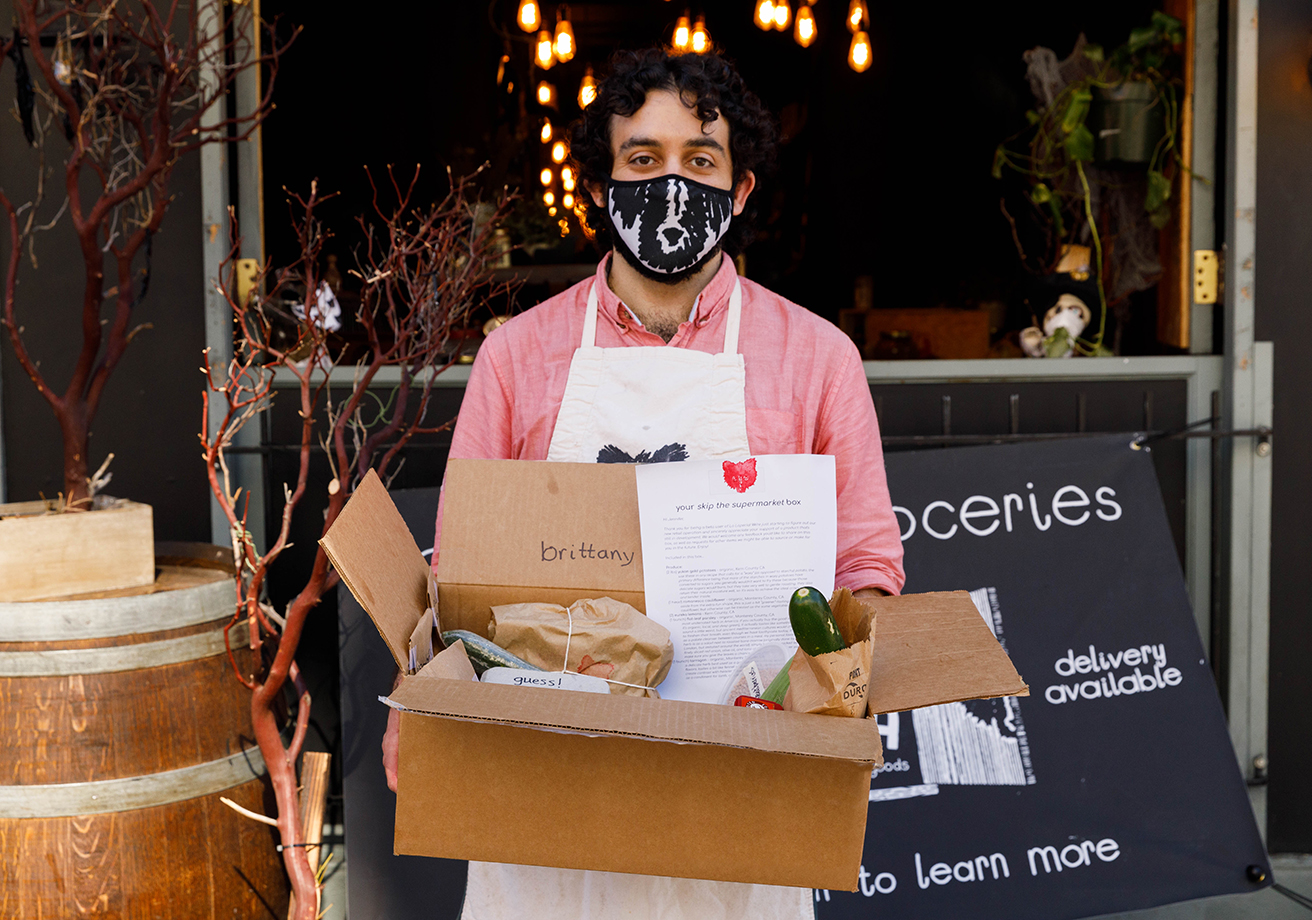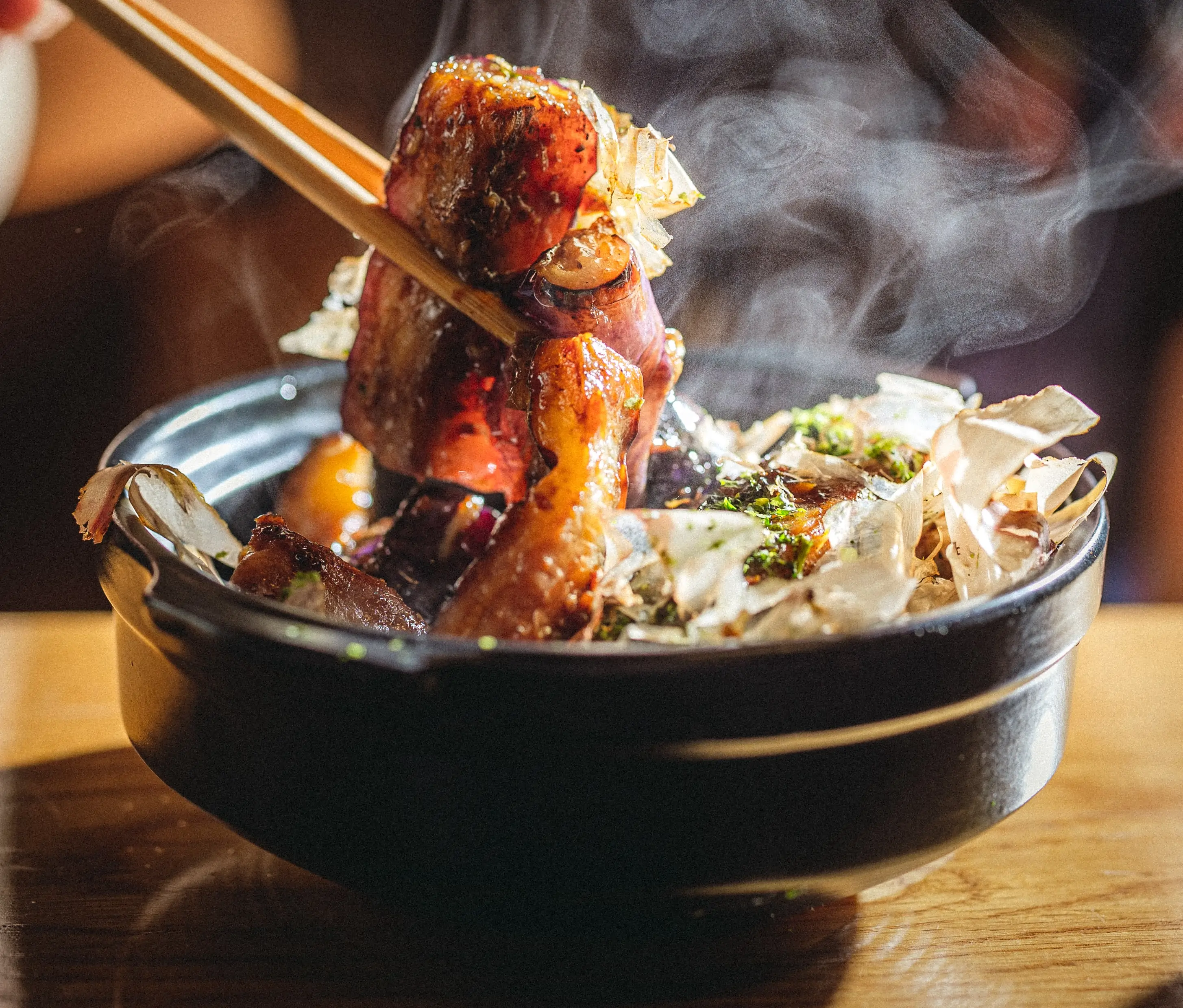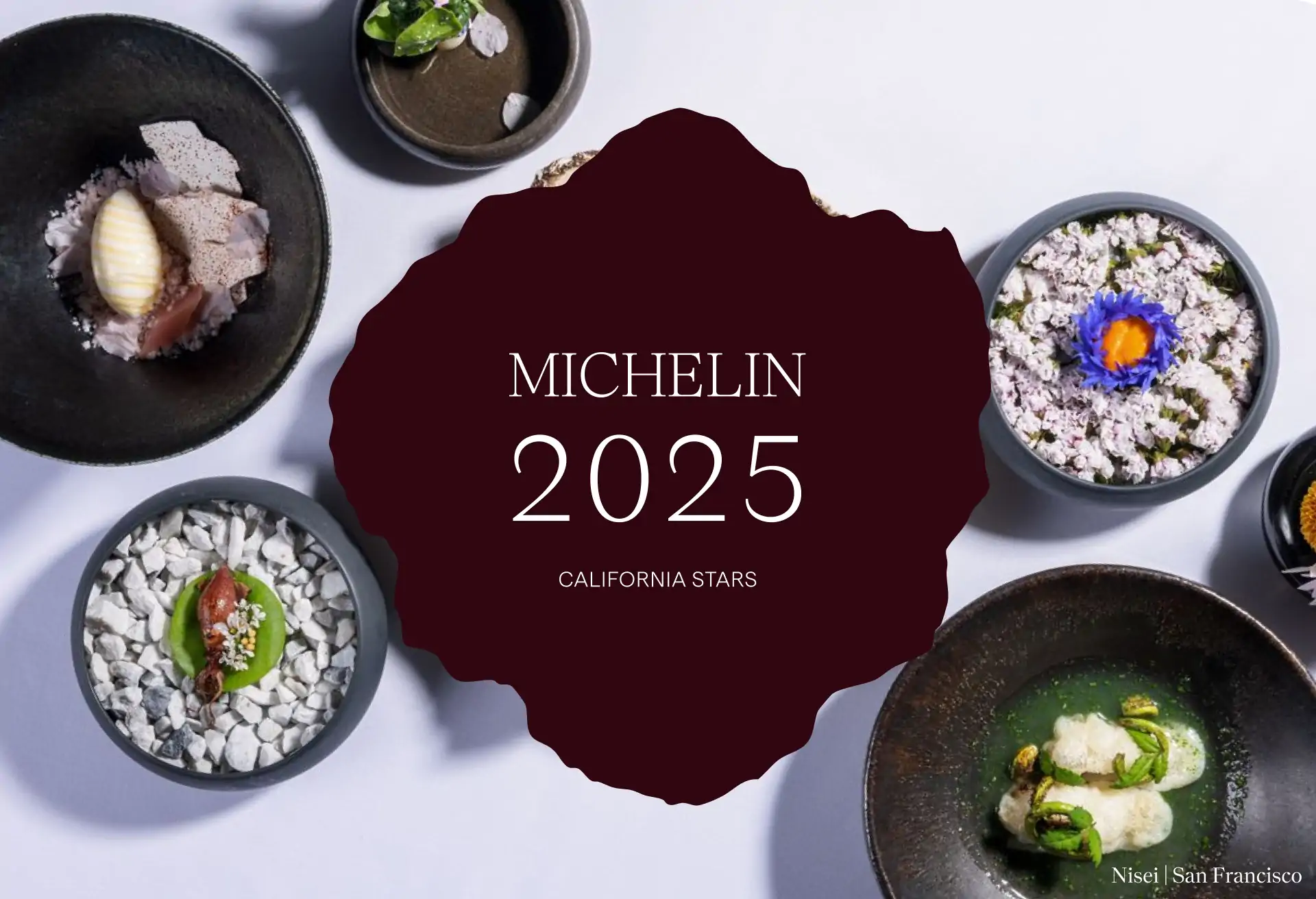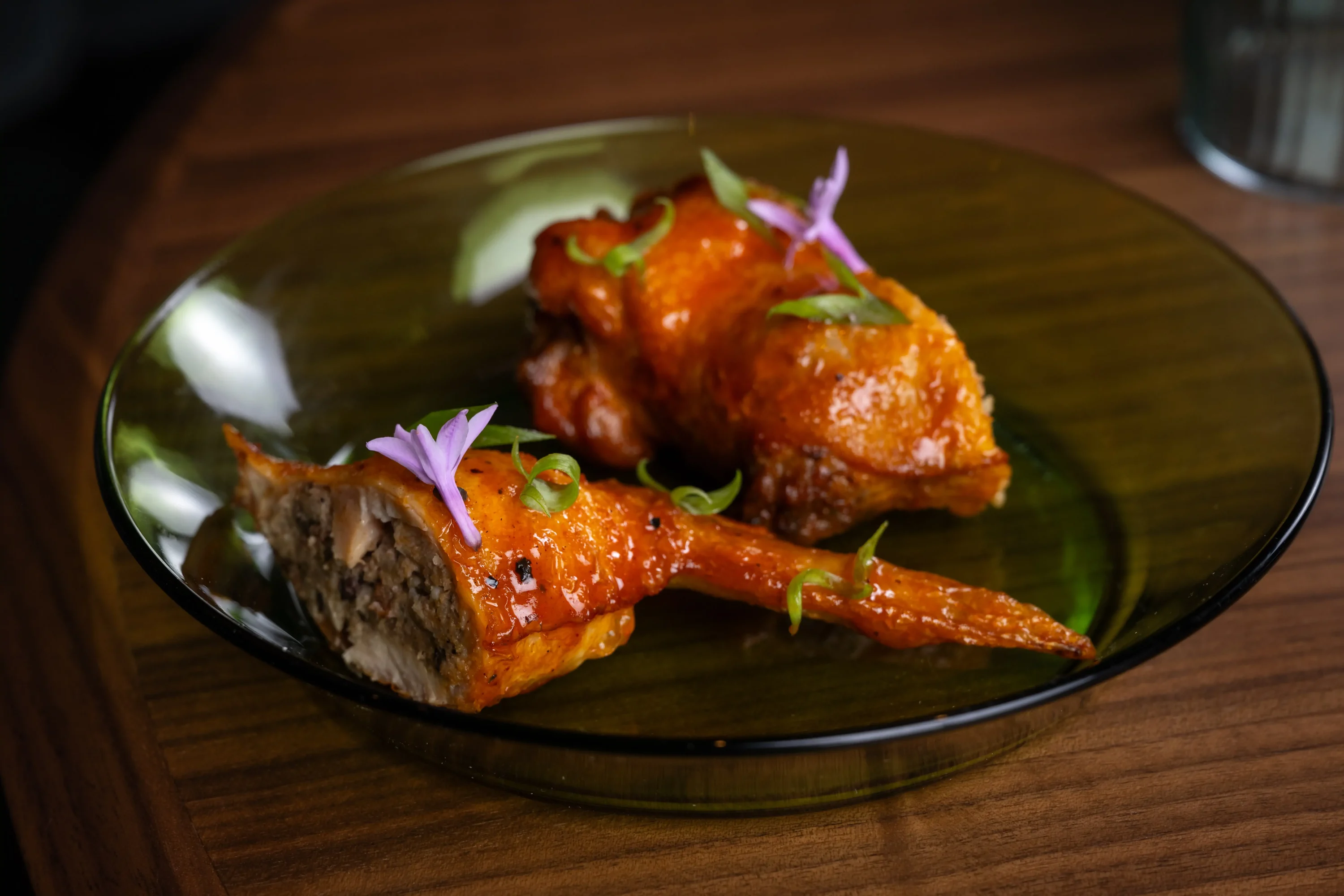In early 2020, Panera Bread made headlines for a novel new concept: coffee subscriptions. At $8.99 a month, subscribers could get unlimited coffee. The pre-pandemic move paid off in a big way for the nationwide cafe chain, raking in 500,000 subscribers by the fall, meaning guaranteed revenue in a time when nothing was guaranteed.
Now, restaurants are looking to the same model to bring some stability to their businesses. At San Francisco Tapas spot El Lopo, chef/owner Daniel Azarkman introduced subscriptions this month to its tasting club for $44, offering a box that includes a bottle of wine or sherry, plus one or two snacks. Diners can choose the frequency — once every one, two, or four weeks — and each box is custom made for the member who gets it. New subscribers complete a form that fills El Lopo in on their dietary restrictions and food preferences so each box feels like it was put together by someone who knows your tastes.
“I’d love to see the program become the default option for our regulars,” Azarkman says. “Anyone who already visits us more than once a month would get more out of their experience by signing up.”
As a business model, subscriptions date back hundreds of years. Long before the internet, publishers of books, magazines, and newspapers understood the value of charging customers monthly or annually. Over the past decade or so, as online streaming services have proliferated, people became more comfortable with seeing multiple recurring charges on their credit card statements each month. And if there were any remaining resistance to signing up for more subscriptions than you ever thought you’d want, the pandemic erased that hesitation as Americans stuck at home subscribed en masse to apps and services, including video conferencing tools to enable working from home and fitness apps that replaced going to the gym.
After a long, hard year of constant pivoting and change, restaurateurs are now seeing how this classic business model can benefit them and their customers, too. The pressures of the past year have forced them to come up with new revenue streams while translating their menu concepts to work well as takeout. This unusual combination of factors has led restaurateurs to realize what publishers have known all along — not only can subscriptions help stabilize their revenue, it can also build loyalty and attract new regulars at the same time. Other benefits include giving them a way to test new ideas with a friendly, small audience of their most devoted fans, while offering those passionate regulars a formal way to support the restaurants they want to thrive.
A VIP experience, to go
El Lopo’s Azarkman knew he needed ideas for keeping the restaurant going when everything shut down last year. “We did some pivoting and tried to do some creative things, including a shift to retail. We hadn’t considered something where customers would pay us on a regular basis,” he recalls.
But when Vivien Sin, founder of The Third Place, reached out to El Lopo about joining her new platform, which helps restaurants offer subscriptions, it clicked right away. Sin says she was inspired to create The Third Place because “there aren’t that many tools for independent businesses to diversify their revenue.”
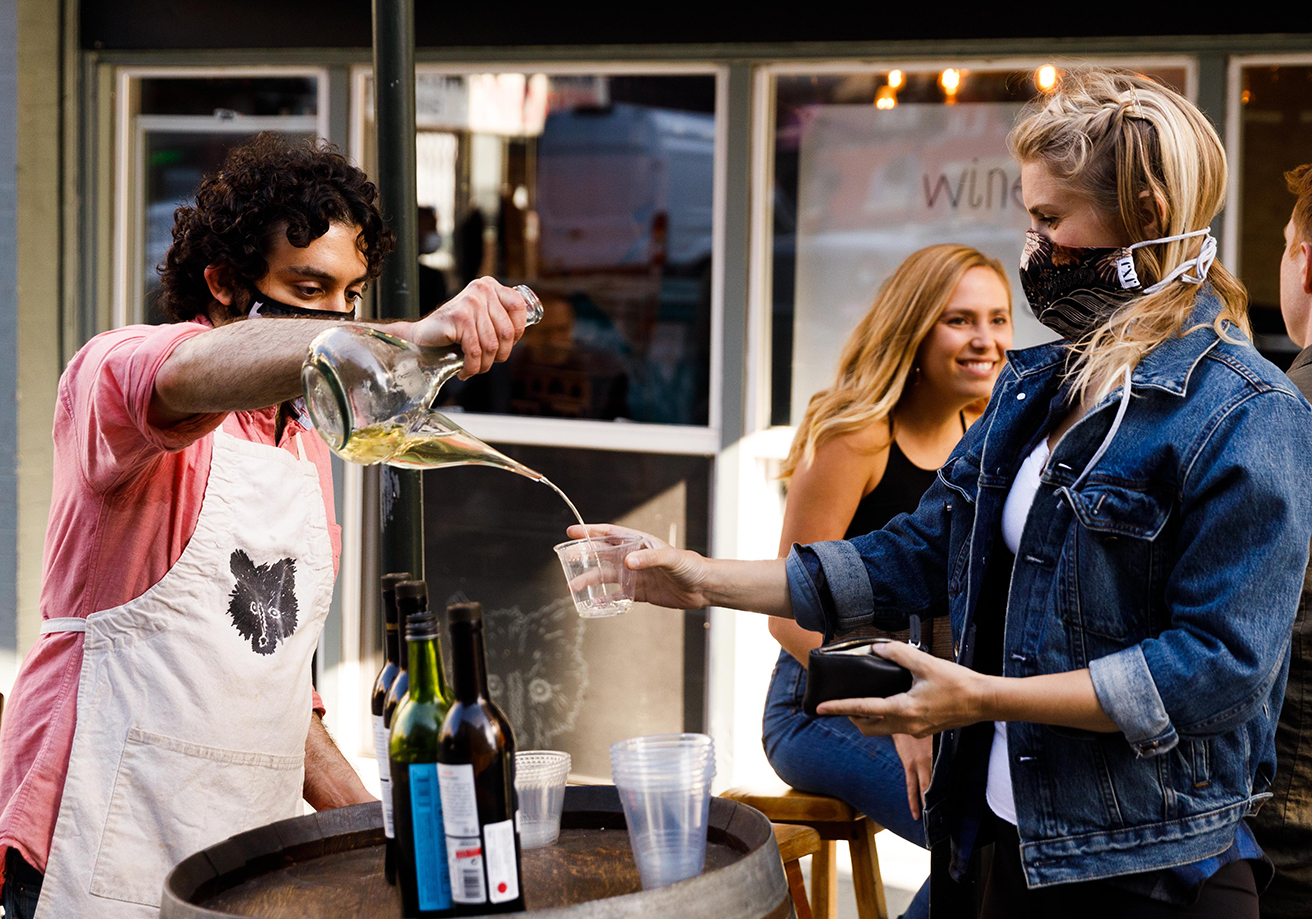
Azarkman gained the confidence to give subscriptions a try when the pandemic hit. To stay afloat while El Lopo was closed, he began selling porrones — Spanish drinking vessels the restaurant is known for — for $250, $500, and $1,000. Buyers got the porrones as well as credit toward future meals at the restaurant. “We paid our rent for months on that, and I really saw how willing our diners were to support us,” he says.
American chain BJ’s Restaurant & Brewhouse tried something similar this year. The company has more than 200 locations, of which 58 in California are piloting a new subscription-based beer club. Members pick up a selection of special beers every two months for $30 that aren’t available at the restaurants — they’re small-batch and barrel-aged brews for members only. The move has kept regulars connected to the restaurant at a time when people haven’t been dining out as often, BJ’s chief marketing officer Kevin Mayer says.
New reasons to dine in
Takeout has been vitally important for a year now, but restaurateurs are looking ahead to a post-pandemic future and welcoming more and more diners back inside as restrictions ease. This won’t mean the end of subscription programs, according to Mayer and Azarkman. In fact, it’s likely just the beginning. “An additional revenue source was always a good idea for a restaurant, pandemic or not. The pandemic just forced everyone to take a step back and evaluate the model from the ground up,” Sin says.
For example, El Lopo has always had an item on its menu called, “Just Take Care of Me.” When a diner chooses this option, they have a conversation with their server about likes and dislikes, appetite level, and budget. “Then we take it from there,” Azarkman says. El Lopo’s second subscription option, the “Just Take Care of Me” club, a dine-in version of the subscription, builds on this concept. For $89 a month, members receive $100 in food and beverage credits. “They never have to see a menu or pay a bill onsite,” says Azarkman. “When we see them come in, we just start sending them stuff.” As with the box, selections are personalized based on the member’s sign-up form. Any unused credits roll over.
BJ’s beer club also includes dine-in perks, including upgrades from 16-ounce beers to 20 ounces and one free appetizer and dessert per month. It’s helped entice members back into the restaurant, according to Mayer.
Regulars, redefined

Subscriptions also offer diners an opportunity to give their favorite restaurants regular support. The pandemic has revealed how tenuous the restaurant business can be, and people are now fully aware that restaurants need their repeat visits to survive. “There’s an underlying consciousness among consumers of how they affect the restaurants,” says Sin. It’s part of the reason she created The Third Place. From the beginning, Azarkman has been astonished at his customer’s willingness to support El Lopo.
Which is not to say that restaurant subscriptions don’t benefit diners every bit as much as restaurants. “One exciting surprise [of the beer club] is our members have spent more time in our restaurants to take advantage of the exclusive perks since joining,” Mayer says of BJ’s. There’s very real value for diners in getting exclusive access to their favorite food and drink. BJ’s plans to expand the program to more locations later this year.
As the vaccines roll out and capacity restrictions are lifted, subscriptions and memberships will give diners even more reasons to go out and celebrate. It’s with an eye to this more convivial future that Azarkman added one of the most fun perks to El Lopo’s “Take Care of Me” club: gifting powers. “Members can send a free drink to a stranger each time they visit,” he says.


